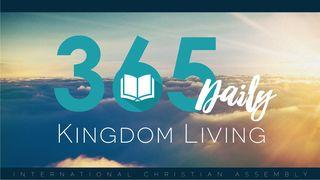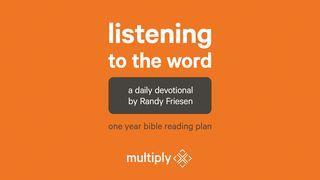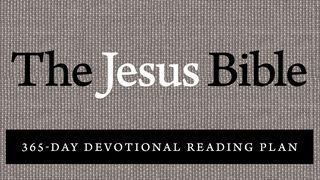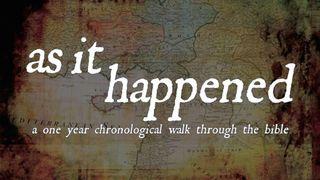For The Love Of GodSample

TWO YEARS AFTER THE VISION OF CHAPTER 7, Daniel had his vision of the ram and the goat (Dan. 8). The text from Daniel 2:4 to the end of 7 was written in Aramaic (a cognate of Hebrew, widely used in the late Babylonian and Persian Empires). Both chapter 2 and chapter 7 provide visions that sweep through from the Babylonian period to the dawning of the kingdom of God; both of these chapters also provide some identification of the referents of the figures in their respective visions. None of the remaining chapters in the book of Daniel includes the same sweep, including the chapter before us. Here the focus is on just two beasts/kingdoms, which turn out to be the middle two of the four specified in chapters 2 and 7. Some observations:
(1) The ram has two horns, one more prominent than the other. The ram represents the Medo-Persian Empire (Dan. 8:20); the more prominent horn, of course, is Persia. This has a bearing, you may recall, on how chapter 2 is interpreted (see meditation for October 17). The shaggy goat is Greece. Philip of Macedon united the Greek city-states, and his son Alexander the Great (referred to as “the first king” of Greece, Dan. 8:21) established the Greek Empire, expanding its limits to the borders of India. Along the way he prevailed against Persia. Upon his premature death, the empire was divided up under his four most powerful generals (Dan. 8:8, 22). Only two of them affect biblical history, the two that established the dynasties between which little Israel, “the Beautiful Land” (Dan. 8:9), was squeezed: the Ptolemies in Egypt to the south and the Seleucids based in Syria to the north. In the second century B.C., the Seleucids prevailed, and one particular Seleucid king, Antiochus IV Epiphanes, became extraordinarily brutal and oppressive. He made the observance of Jewish religion a capital offense, defiled the rebuilt temple, and for three-and-a-half years (roughly 1,150 days, embracing 2,300 morning and evening sacrifices, Dan. 8:14), 167-164 B.C., wreaked havoc in the land until the guerrilla warfare led by the Maccabees forced him out of Israel and back to Syria.
(2) The vision presents itself as dealing with the “distant future” (Dan. 8:26), i.e., almost four centuries after Daniel’s time. It deals with “the time of the end” (Dan. 8:17). That expression means different things in different contexts. The “end” can refer to the end of the Lord’s forbearance at a particular time in history (e.g., Ezek. 7:2-3); here, the “end” is probably with respect to the question asked in verse 13.
(3) The last verse of chapter 8 testifies that deep dealings with God, and the reception of genuine revelation, may exact a physical toll.
(1) The ram has two horns, one more prominent than the other. The ram represents the Medo-Persian Empire (Dan. 8:20); the more prominent horn, of course, is Persia. This has a bearing, you may recall, on how chapter 2 is interpreted (see meditation for October 17). The shaggy goat is Greece. Philip of Macedon united the Greek city-states, and his son Alexander the Great (referred to as “the first king” of Greece, Dan. 8:21) established the Greek Empire, expanding its limits to the borders of India. Along the way he prevailed against Persia. Upon his premature death, the empire was divided up under his four most powerful generals (Dan. 8:8, 22). Only two of them affect biblical history, the two that established the dynasties between which little Israel, “the Beautiful Land” (Dan. 8:9), was squeezed: the Ptolemies in Egypt to the south and the Seleucids based in Syria to the north. In the second century B.C., the Seleucids prevailed, and one particular Seleucid king, Antiochus IV Epiphanes, became extraordinarily brutal and oppressive. He made the observance of Jewish religion a capital offense, defiled the rebuilt temple, and for three-and-a-half years (roughly 1,150 days, embracing 2,300 morning and evening sacrifices, Dan. 8:14), 167-164 B.C., wreaked havoc in the land until the guerrilla warfare led by the Maccabees forced him out of Israel and back to Syria.
(2) The vision presents itself as dealing with the “distant future” (Dan. 8:26), i.e., almost four centuries after Daniel’s time. It deals with “the time of the end” (Dan. 8:17). That expression means different things in different contexts. The “end” can refer to the end of the Lord’s forbearance at a particular time in history (e.g., Ezek. 7:2-3); here, the “end” is probably with respect to the question asked in verse 13.
(3) The last verse of chapter 8 testifies that deep dealings with God, and the reception of genuine revelation, may exact a physical toll.
About this Plan

A daily devotional for discovering the riches of God's word: For the Love of God is a daily devotional designed to walk a person through the Bible in a year while assisting the reader in discovering the riches of God's Word. Our hope is that this daily devotional will deepen your understanding and appreciation of God's Word, for the love of God.
More
We would like to thank The Gospel Coalition for providing this plan. For more information, please visit: thegospelcoalition.org









